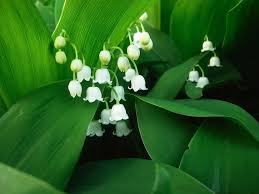# Everything You Need to Know About White Egg Orchids in Bonsai Art

## Table of Contents
1. **Introduction**
– 1.1 Overview of Bonsai Art
– 1.2 Significance of White Egg Orchids
– 1.3 Purpose of This Article
2. **Understanding White Egg Orchids**
– 2.1 Botanical Characteristics
– 2.2 Cultural Significance
– 2.3 Seasonal Growth Patterns
3. **The Role of White Egg Orchids in Bonsai**
– 3.1 Ideal Traits for Bonsai Cultivation
– 3.2 Common Varieties of White Egg Orchids
– 3.3 Aesthetic Appeal in Bonsai
4. **Growing White Egg Orchids as Bonsai**
– 4.1 Selecting the Right Specimen
– 4.2 Potting and Soil Requirements
– 4.3 Watering and Nutrient Needs
5. **Techniques for Shaping White Egg Orchids in Bonsai**
– 5.1 Pruning Techniques
– 5.2 Wiring for Shape and Structure
– 5.3 Maintaining Balance and Proportion
6. **Caring for White Egg Orchids in Bonsai**
– 6.1 Light and Temperature Requirements
– 6.2 Pests and Diseases
– 6.3 Seasonal Care Adjustments
7. **Design Ideas for White Egg Orchid Bonsai**
– 7.1 Display Techniques
– 7.2 Incorporating Other Elements
– 7.3 Seasonal Themes and Variations
8. **Common Mistakes to Avoid in Bonsai Care**
– 8.1 Overwatering and Underwatering
– 8.2 Incorrect Pruning Practices
– 8.3 Ignoring Seasonal Changes
9. **Conclusion**
– 9.1 Summary of Key Points
– 9.2 Encouragement for Enthusiasts
—
## 1. Introduction
### 1.1 Overview of Bonsai Art
Bonsai is a centuries-old art form originating from Japan that involves the cultivation of miniature trees in pots. This practice emphasizes the beauty and elegance of nature by replicating the proportions of full-sized trees in a smaller scale. The term “bonsai” translates to “planted in a container,” and the art encompasses a combination of horticultural techniques, aesthetic principles, and philosophical concepts.
### 1.2 Significance of White Egg Orchids
White Egg Orchids, or *Dendrobium nobile*, are not only celebrated for their exquisite blooms but also for their unique characteristics that make them suitable for bonsai cultivation. Their slender stems, stunning white flowers, and rich symbolism in various cultures add depth to the bonsai art form. White Egg Orchids can evoke a sense of tranquility and grace, making them a beloved choice for bonsai enthusiasts.
### 1.3 Purpose of This Article
This article aims to provide a comprehensive overview of White Egg Orchids in the context of bonsai art. From understanding their botanical characteristics to exploring cultivation techniques and care, this guide will equip you with the knowledge needed to create and maintain beautiful White Egg Orchid bonsai.
—
## 2. Understanding White Egg Orchids
### 2.1 Botanical Characteristics
White Egg Orchids belong to the *Dendrobium* genus and are characterized by their long, slender stems that can reach up to 2 feet in height. The flowers are typically white with subtle hints of yellow or pink, appearing in clusters along the stem. These orchids thrive in warm, humid environments and are epiphytic by nature, meaning they grow on other surfaces rather than in soil.
### 2.2 Cultural Significance
In various cultures, White Egg Orchids symbolize purity, elegance, and beauty. They are often associated with significant life events such as weddings and anniversaries, making them a popular choice for floral arrangements. In bonsai, these orchids can represent a connection to nature and the serenity it brings, enhancing the overall aesthetic and emotional impact of the art piece.
### 2.3 Seasonal Growth Patterns
White Egg Orchids have specific seasonal growth patterns, typically blooming from late winter to early spring. During this time, the plant requires more light and humidity to support the growth of healthy flowers. Understanding these seasonal patterns is essential for successful bonsai cultivation, as it affects watering, fertilization, and general care.
—
## 3. The Role of White Egg Orchids in Bonsai
### 3.1 Ideal Traits for Bonsai Cultivation
When considering plants for bonsai, several traits are ideal:
– **Compact Growth Habit**: White Egg Orchids grow upright with slender stems, making them suitable for bonsai training.
– **Attractive Foliage**: The leaves of these orchids are dark green and glossy, providing an appealing contrast to the delicate flowers.
– **Flowering Potential**: Their beautiful blooms can enhance the visual appeal of bonsai arrangements, creating seasonal interest.
### 3.2 Common Varieties of White Egg Orchids
Several varieties of *Dendrobium nobile* exist, each with unique characteristics. The most common include:
– **Traditional White Egg Orchid**: Known for its pure white blooms and slender stems, it is the classic choice for bonsai.
– **Pink-tinged Varieties**: Some hybrids feature blooms with delicate pink hues, offering a unique twist for bonsai enthusiasts.
### 3.3 Aesthetic Appeal in Bonsai
White Egg Orchids bring a unique aesthetic to bonsai arrangements. Their elegant, upright growth and stunning flowers create a focal point that can enhance any display. The contrast between the glossy green leaves and the delicate white flowers adds visual interest, making them a sought-after choice for bonsai artists.
—
## 4. Growing White Egg Orchids as Bonsai
### 4.1 Selecting the Right Specimen
When choosing a White Egg Orchid for bonsai, look for a healthy plant with strong stems and vibrant foliage. Ensure that the roots are not overly crowded and that the orchid has a well-defined growth structure. A younger plant may be easier to train and shape, but more mature specimens can also make stunning bonsai with the right care.
### 4.2 Potting and Soil Requirements
Choosing the right pot and soil is crucial for the health of your bonsai. Here are some guidelines:
– **Pot Selection**: Use a shallow pot that allows for proper drainage. Bonsai pots made of clay or ceramic are ideal as they provide stability and aesthetics.
– **Soil Requirements**: A well-draining orchid mix is essential. You can create your own mix using materials like bark, sphagnum moss, and perlite to ensure adequate drainage and aeration for the roots.
### 4.3 Watering and Nutrient Needs
Proper watering is vital for the health of White Egg Orchids. Follow these tips:
– **Watering Frequency**: Water your bonsai when the top inch of soil feels dry. Avoid overwatering, as this can lead to root rot.
– **Nutrient Requirements**: Fertilize your White Egg Orchid bonsai with a balanced orchid fertilizer during the growing season. Dilute the fertilizer to half-strength to prevent burning the roots.
—
## 5. Techniques for Shaping White Egg Orchids in Bonsai
### 5.1 Pruning Techniques
Pruning is essential for shaping your White Egg Orchid bonsai. Here are some key techniques:
– **Pinching**: Regularly pinch back new growth to encourage bushier growth and prevent legginess.
– **Cutting**: Use sterilized scissors to cut back leggy or dead stems. Aim to create a balanced structure that reflects the natural form of the orchid.
### 5.2 Wiring for Shape and Structure
Wiring is a technique used to shape bonsai trees. Follow these steps:
1. **Select the Right Wire**: Use aluminum or copper wire, ensuring it is thick enough to hold the shape without damaging the stems.
2. **Wiring Technique**: Carefully wrap the wire around the stem, starting from the base and moving upwards. Be gentle to avoid damaging the delicate bark.
3. **Shaping**: Once wired, gently bend the stems into your desired shape. Avoid excessive bending to prevent breakage.
### 5.3 Maintaining Balance and Proportion
Achieving balance and proportion in your bonsai is crucial for a visually pleasing display. Consider the following tips:
– **Height and Width**: Ensure that the height of the orchid is proportional to the width of the pot. This balance creates a harmonious appearance.
– **Placement of Blooms**: Position the blooms so they are visible and accessible, enhancing the overall impact of the arrangement.
—
## 6. Caring for White Egg Orchids in Bonsai
### 6.1 Light and Temperature Requirements
White Egg Orchids thrive in bright, indirect light. Here are some key points to consider:
– **Light Conditions**: Place your bonsai in a location that receives ample natural light but is shielded from harsh afternoon sun to prevent leaf scorch.
– **Temperature Preferences**: Maintain a warm temperature between 65°F to 75°F (18°C to 24°C) during the day and slightly cooler at night to mimic natural conditions.
### 6.2 Pests and Diseases
Like all plants, White Egg Orchids can be susceptible to pests and diseases. Common issues include:
– **Mealybugs**: These pests can be removed with a cotton swab dipped in alcohol.
– **Root Rot**: Ensure proper drainage and avoid overwatering to prevent root rot. If detected, remove the affected roots and repot in fresh soil.
### 6.3 Seasonal Care Adjustments
As seasons change, so do the care requirements for your White Egg Orchid bonsai. Here are some adjustments
to consider:
– **Spring and Summer**: Increase watering and fertilization as the plant enters its active growth phase.
– **Fall and Winter**: Reduce watering and avoid fertilizing during dormancy. Ensure the plant receives enough light to maintain health.
—
## 7. Design Ideas for White Egg Orchid Bonsai
### 7.1 Display Techniques
How you display your bonsai can significantly impact its overall aesthetic. Here are some ideas:
– **Table Centerpieces**: Use White Egg Orchid bonsai as centerpieces for dining tables or special events to create a sophisticated ambiance.
– **Windowsill Decor**: Place them in sunny windows for a touch of nature indoors, allowing the blooms to catch the light beautifully.
### 7.2 Incorporating Other Elements
To enhance your bonsai design, consider incorporating complementary elements:
– **Stones and Gravel**: Use decorative stones or gravel in the pot for added texture and visual interest.
– **Additional Foliage**: Pair your White Egg Orchid bonsai with other plants, such as moss or ferns, to create a mini ecosystem.
### 7.3 Seasonal Themes and Variations
Change the display to reflect different seasons:
– **Spring**: Highlight the blooming phase with bright colors and fresh greens.
– **Winter**: Use muted tones and minimalistic designs to emphasize the orchid’s elegance against a winter backdrop.
—
## 8. Common Mistakes to Avoid in Bonsai Care
### 8.1 Overwatering and Underwatering
One of the most common mistakes in bonsai care is improper watering. To avoid this:
– **Regular Checks**: Develop a routine to check soil moisture regularly.
– **Use the Right Pots**: Ensure pots have proper drainage to prevent standing water.
### 8.2 Incorrect Pruning Practices
Improper pruning can damage your bonsai’s growth. Avoid these pitfalls:
– **Cutting Too Much**: Be cautious when pruning; remove only what is necessary to maintain shape and health.
– **Neglecting Maintenance**: Regularly assess your bonsai for dead or unhealthy growth, and address it promptly.
### 8.3 Ignoring Seasonal Changes
Failing to adjust care routines for seasonal changes can hinder growth. Always consider:
– **Adapting Light Exposure**: Modify the placement of your bonsai as seasons change to ensure optimal light conditions.
– **Adjusting Watering**: Be mindful of the increased or decreased water needs as the temperature fluctuates.
—
## 9. Conclusion
### 9.1 Summary of Key Points
White Egg Orchids offer a unique and beautiful option for bonsai enthusiasts. Their elegance, seasonal blooms, and ease of care make them an excellent choice for creating stunning arrangements. Understanding their characteristics, proper care techniques, and design possibilities will help you appreciate and cultivate these exquisite plants.
### 9.2 Encouragement for Enthusiasts
Whether you are a seasoned bonsai artist or a beginner, White Egg Orchids can bring beauty and joy to your collection. Embrace the art of bonsai, explore your creativity, and enjoy the journey of nurturing these beautiful plants.
—
This comprehensive guide should provide you with valuable insights into the world of White Egg Orchids in bonsai art. With proper care, creativity, and attention, you can cultivate stunning bonsai arrangements that reflect the elegance of these extraordinary orchids. Enjoy the process of creating and caring for your White Egg Orchid bonsai!

